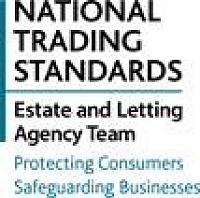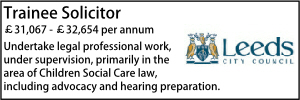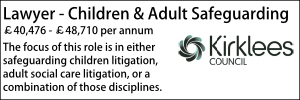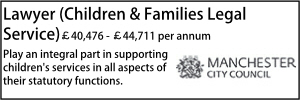

The final say
News
Must read
Families refusing access to support
Features Test
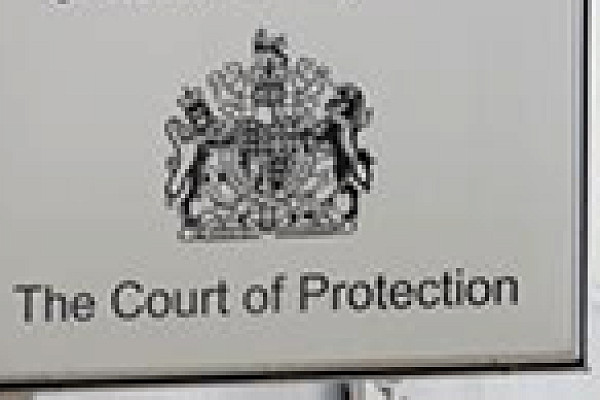
Producing robust capacity assessments and the approaches to assessing capacity

Disability discrimination and proportionality in housing management

Cross-border deprivation of liberty

Dealing with unexplained deaths and inquests

Court of Protection case update: May 2025
Features
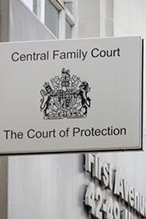
Producing robust capacity assessments and the approaches to assessing capacity

Disability discrimination and proportionality in housing management

Cross-border deprivation of liberty

Dealing with unexplained deaths and inquests

Court of Protection case update: May 2025
Sponsored articles
What is the role of the National Trading Standards Estate & Letting Agency Team in assisting enforcement authorities?
Webinars
Is Omeprazole the new EDS?
More features
Provision of same-sex intimate care
Court of Protection case update: April 2025
High Court guidance on Article 3 engagement in care at home cases
‘Stitch’, capacity and complexity
Issuing proceedings in best interests cases
Court of Protection case law update: March 2025
The Health and Social Care (Wales) Bill Series – Regulation and Inspection of Social Care
The Health and Social Care (Wales) Bill Series – Direct Payments for NHS Continuing Healthcare
What is the right approach to Care Act assessments?
Disabled people in immigration bail: the duties of the Home Office and local authorities
Capacity, insight and professional cultures
Court of Protection update: February 2025
Setting care home fees
Could this be the end for local authority-provided residential care?
“On a DoLS”
It’s all about the care plan
Court of Protection case update: January 2025
Mental capacity and expert evidence
Best interests, wishes and feelings
Capacity, sexual relations and public protection – another go-round before the Court of Appeal
Court of Protection Update - December 2024
Fluctuating capacity, the “longitudinal approach” and practical dilemmas
Capacity and civil proceedings
Recovering adult social care charges via insolvency administration orders
Court of Protection case update: October 2024
Communication with protected parties in legal proceedings
The way forward for CQC – something old, something new….
The Ombudsman, DoLS and triaging – asking the impossible?
Outsourcing and the Human Rights Act 1998 – the consequences
Commissioning care and support in Wales: new code of practice
Strained relations
- Details
The courts are often reluctant to say that a total prohibition of contact with a close relative is in someone's best interests. Alex Ruck Keene and Victoria Butler-Cole analyse one rare occasion where this happened.
The decision in A Council v X (by her Litigation Friend the Official Solicitor), Y and Z [2011] EWHC B10 (COP) is the sequel to that reported as HBCC v LG (by her Litigation Friend the Official Solicitor), JG and SG [2010] EWHC 1527 (Fam), concerning the best interests of an elderly lady (now referred to as X) who suffered advanced dementia.
At that earlier hearing, Eleanor King J had determined inter alia that it was in X’s best interests that she reside at a care home (‘QM’) and that contact between X and her daughter, now known as Y, be limited and supervised. The judge had accepted that there had been problems with the contact between X and Y and that it often led to X becoming distressed. However, the judge expressed the hope that contact would improve.
Y had continued to attend QM for supervised contact visits with X. In July 2010, there was a further incident during the course of one such visit in which it was contended that Y had become physically abusive to staff. The police were required to attend as Y refused to leave the premises. This incident led the Council to inform Y that contact was suspended and to ban her from attending QM. The Council then made an application that a declaration that contact between X and Z, was no longer in X’s best interests. An interim declaration was made by the Court in August 2010 that contact was not in X’s best interests but the Council were required to consider what contact could take place away from QM. A further expert report was prepared directly addressing the issue of contact.
Y was unrepresented at the contact hearing but was assisted by a McKenzie friend. Y refused to cross-examine the Council’s witnesses, and when giving evidence herself, responded consistently with “no comment”. Eleanor King J noted that although it was regrettable that the evidence of the Council was untested, having heard the witnesses and seen the documentation concerning the contact visits, she accepted it. X was now immobile and no longer recognised Y, her dementia had advanced and moving her to a location other than QM would be potentially confusing and distressing aside from posing significant physical difficulties. The local authority had been unable to identify any other location where contact could take place, either because the venue itself was unsuitable or because they had declined to have Y on the premises due to her behaviour. Eleanor King J held that if she believed X could make the journey or that contact was otherwise in her best interests, she would not have let the practicalities deter her and would have held the matter over for other options to be explored by the local authority.
As noted above, the Judge had the benefit of an expert report prepared by a Miss S expressly to consider the question of contact. Miss S had concluded on the basis of Y’s behaviour that direct contact was not in X’s best interests. Eleanor King J was not satisfied that if the person supervising contact were to be altered, Y’s behaviour would change. In reaching her conclusion, she made it clear that she had considered the Article 8 rights of both Y and X.
Comment
This case is of interest as a rare example of the court deciding that a total prohibition on direct contact was in P’s best interests, due in large part to the conduct of a relative. In the authors’ experience, the courts will go to great lengths to attempt to preserve contact even where statutory bodies and care providers have long since given up. The total breakdown in relationships in this case, and the apparently inability of Y to behave appropriately not just with X but generally, was sufficient for the court to accept that further attempts to resolve the impasse had no prospect of success.
Alex Ruck Keene and Victoria Butler-Cole are barristers at 39 Essex Street.
Judiciary backs joint publication on media access and reporting in family courts
- Details
Judges and journalists have issued a joint publication on media access and reporting in the family courts.
The document – The Family Courts: Media Access and Reporting – was jointly published by the President of the Family Division, the Judicial College and the Society of Editors.
A statement on the Judiciary of England and Wales’ website said: “There is no more difficult issue in family justice than the reporting of cases. There is a tension between concerns about ‘secret justice’ and legitimate expectations of privacy and confidentiality for the family. Both standpoints are valid, and the question is whether they are irreconcileable.”
The document – written by barristers Adam Wolanski and Kate Wilson – sets out the current state of the law in this area, analysing “where we are at the moment: what we can and what we cannot do”.
It covers issues such as:
- Principles
- Sources of law
- Access to court hearings
- Media access to court documents
- Reporting the courts, including judgments
- Orders contra mundum
- Appeals
- Disclosure from family proceedings
The publication also considers various types of cases: children public law cases; children private law cases; adoption cases; parental order applications; matrimonial and civil partnership causes; applications for ancillary relief and related matters; applications under part IV of the Family Law Act 1996; vulnerable and incapacitated adults (inherent jurisdiction); and incapacitated adults (the Court of Protection).
The Judiciary website said: “It is, in our view, a substantial and very important piece of work. Its publication is all the more timely as the debate on increased transparency and public confidence in the family courts moves forward.
“It will serve to inform future consideration of this difficult and sensitive area, including the questions of access to and reporting of proceedings by the media, whilst maintaining the privacy of the families involved.”
A copy of the publication can be downloaded here.
Round the clock care
- Details
Attempts to change care arrangements often lead to a challenge. Robert Wassall reviews one recent case where a 24-hour on-site warden service was set to be replaced.
On 29 June 2011, in the case of R (on the application of Tiller) v Secretary of State for the Home Department, the claimant (T) applied for judicial review of the defendant local authority's decision to alter the 24-hour care provided to tenants of a sheltered housing scheme.
T was disabled and a tenant at the sheltered housing scheme, which was funded by the local authority. A 24-hour on-site warden service was provided. Due to the cost of the service the local authority wished to replace it with an alternative service and began a consultation process with the tenants, carers and managers. A project group was set up to consider options, but keeping the existing service was not permitted as an option. Meetings were held with tenants, and their views were obtained by a questionnaire and survey.
Local authority officers prepared a report containing recommendations, and a senior officer decided that the service should be replaced with an on-site service during week-day office hours and an on-call remote service at other times. The most vulnerable tenants were offered accommodation at nearby facilities that offered greater levels of care.
T argued that the local authority had failed to give any conscious thought to its duty under the Disability Discrimination Act 1995 (DDA) to have due regard to the need to achieve certain goals in relation to disabled people in carrying out its functions, which was evidenced by the failure to mention the duty or the Act in any documents relating to its decision. T also contended that the ruling out of the status quo demonstrated that the consultation was not as open as it should have been.
The court decided that:
- the consultation process had not been flawed by the ruling out of the status quo; one of the options considered was a more generous provision
- the decision had been taken after full consultation and had been properly taken after a proper assessment of need. Although some tenants had continuing concerns about the level of care at the time the decision was made, it was not right to say that those concerns had not been considered
- notwithstanding the lack of mention of the DDA in the documents, the local authority had discharged its legal obligations.
What this means for social landlords
Changing care arrangements are nearly always difficult and increasingly result in a legal challenge. Such challenges usually allege a failure to properly consult and that the human rights of those being cared for have been breached. Often, this results in an unfavourable outcome for the social landlord.
Even if, as in this case, the landlord was successful, the fact is that it became embroiled in costly legal proceedings. This is because although the landlord acted in a way that was legally correct, it failed to demonstrate to those affected that it had acted fairly, by (a) failing to specifically refer, in its consultation documentation, to the DDA (now the Equality Act), and (b) specifically ruling out the keeping the existing arrangements (thus giving the impression that the outcome was a foregone conclusion).
Robert Wassall is a partner and head of social housing at Blake Lapthorn. He can be contacted on 023 8085 7012 or by email at
NHS Trust loses appeal over TUPE in case where care home residents rehoused
- Details
An NHS trust has failed to establish that there was a TUPE transfer in a case where residents of a care home it operated were rehoused in individual homes.
In the case of Nottinghamshire Healthcare Nhs Trust v Hamshaw & Ors (Transfer of Undertakings: Service Provision Change) [2011] UKEAT 0037_11_1907, the 12 claimant care workers were formerly employed by the trust at Hillside House, a care home for adults with learning disabilities.
The home was closed on 31 March 2010, with the residents re-housed into homes of their own. Their care was to be transferred to two independent care providers, Perthyn or Choice Support.
The care workers were offered jobs with the new providers, in most cases to sleep in at the service users’ homes. They were also expected to assist the former residents with managing their homes and domestic tasks such as cleaning, shopping, food preparation and cooking.
The care workers were told by the NHS Trust that this was a relevant transfer within TUPE and that their employment was to continue with Perthyn (in the case of two employees) and Choice Support (for the ten other members of staff). Nottinghamshire Healthcare then proceeded to stop paying them with effect from 1 April 2010.
The claimants brought claims for unfair dismissal, pay in lieu of notice, outstanding holiday pay and a contractual redundancy payment. Their union, Unison, also sought a protective award for failure to consult about the proposed transfer.
The Employment Appeal Tribunal concluded that Judge Morgan at the Employment Tribunal was entitled to find there was no transfer.
Mr Justice Bean rejected the Trust’s argument that the economic entity formerly comprised in Hillside House, although “fragmented” post-transfer, had retained its identity.
In addition the judge ruled that the services provided by the care workers were not fundamentally or essentially the same after the change as they had been before.
On your guard
- Details
Elizabeth Cooper and Christopher Perrin examine recent developments in relation to the safeguarding of vulnerable groups and assess their impact on the public sector.
Working with children and vulnerable adults is highly regulated. This includes, for good reason, vetting anyone who applies for a job working with either of these groups (the "Vulnerable Groups"). However, the Safeguarding Vulnerable Groups Act 2006 (the "Act") goes much further than merely vetting those whose jobs involve working with Vulnerable Groups. Although the Act is only partially in force at present, the remaining provisions could be implemented at various stages over the coming years, at a considerable cost to the public sector, their ICT service providers and other data processors.
The Act was created (and subsequently passed) as a result of the Bichard Inquiry (the "Inquiry"), which was instigated in the wake of the Soham murders in 2002 (when schoolgirls Jessica Chapman and Holly Wells were murdered by Ian Huntley, the caretaker of the school which they attended). The Inquiry questioned, amongst other things, the way in which people are recruited by employers to work with Vulnerable Groups. In particular, it criticised the way in which background checks are carried out in advance of the commencement of relevant employment.
The Inquiry produced a report (www.bichardinquiry.ork.uk/10663/report.pdf) in June 2004 which, at recommendation 19, highlighted the need for a single agency to vet all individuals who want to work with Vulnerable Groups and to bar unsuitable people from doing so. Hence, the Act was soon born and the Independent Safeguard Authority ("ISA") was set up to fulfil this role across England, Wales and Northern Ireland. This function has become commonly known as the vetting and barring scheme ("VBS").
The ISA and CRB checks
Prior to 30 January 2009, the Secretary of State was responsible for administering three statutory lists, detailing the names of individuals who were considered unsuitable to work with Vulnerable Groups, namely
1. POCA list (held pursuant to section 1 of the Protection of Children Act 1999);
2. List 99 (in relation to the education sector and held pursuant to section 142 of the Education Act 2002); and
3. POVA list (protection of vulnerable adults and held pursuant to section 81 of the Care Standards Act 2000).
The ISA took over responsibility for these lists on 30 January 2009. Thereafter, on 12 October 2009, the POCA and POVA lists were replaced by the ISA Children's barred list and the ISA Vulnerable Adults barred list.
Also on 12 October 2009, it became a requirement for employers to carry out an enhanced Criminal Records Bureau ("CRB") check on new recruits seeking to work with Vulnerable Groups. Prior to this date, those persons who would not have direct contact with Vulnerable Groups would only have to undergo a standard (less stringent) CRB check. Hence, as the law stands, the ISA scheme is clearly not intended to replace the system of carrying out CRB checks. This is perhaps due to the differences between ISA and CRB checks. Whilst an ISA check will simply reveal whether a certain individual is barred from working with Vulnerable Groups, a CRB check will capture wider information about that person's criminal record history. This is significant when one considers that a barred person may not always have committed a criminal offence and that a person who has a criminal history may not necessarily be barred. Even so, as a result of a recommendation made by the Chair of the ISA on 14 December 2009, the Government plans to review the statutory requirements for CRB disclosures in the case of those persons who work with Vulnerable Groups that have already registered with the ISA.
In addition to the above, on 12 October 2009, it became an offence for employers, personnel suppliers, regulated activity providers and individual workers to permit a barred person to engage in regulated activity. An activity is regulated if it falls within the list of activities prescribed within the Act or if it is carried out at prescribed establishments and gives persons the opportunity to have contact with children or vulnerable adults. Some examples of prescribed activities are teaching, training, instruction, supervision and advice. Some examples of prescribed establishments are schools, children's homes, childcare premises and care homes.
And, if certain bodies, including regulated activity providers, have reason to believe that an individual has harmed or is a risk to Vulnerable Groups, those bodies are now legally obliged to refer any relevant information to the ISA. If they do not, they run the risk of being fined or (in the case of offending individuals) imprisonment.
Importantly, from November 2010, the Act states that anyone who wishes to work in regulated activity with Vulnerable Groups must register with the ISA. However, in June 2010, the coalition government announced an immediate halt to the registration system. This was an acknowledgement by the new government that the planned registration scheme is severely flawed.
Following a consultation and review of the Act, in February 2011 the Protection of Freedoms Bill was introduced to Parliament ("the Bill"). In short, the Bill aims to scale back the existing legislation protecting Vulnerable Groups to "common sense levels".
At the time of writing, the Bill is awaiting a date for the Report Stage in the House of Commons. Hence, it still has a long way to go until it becomes law. Until then, readers should be aware of the provisions of the Act that remain in force as well as those which could come into force if the Bill fails to complete its journey successfully through Parliament.
Of particular note, the following parts of the Act will remain in force:
- the ISA will continue to maintain a Children's barred list and a Vulnerable Adults barred list;
- the duty of referral will continue to apply; and
- it is still a criminal offence to employ barred individuals.
Regulated activity providers
Rather unhelpfully, the ISA has issued very little guidance about what is meant by "regulated activity provider" ("RAP"). Hence, scrutiny of the Act is required. The Act states that for someone to be a RAP, three conditions must be met:
1. They must be responsible for the management or control of the regulated activity
2. Exercise of that responsibility must not be subject to supervision or direction by any other person for those purposes; and
3. They must make (or authorise the making of) arrangements for another person to engage in that activity, whether in connection with a contract of service or services or otherwise.
In view of the above, it is clear that an employer or a third party organisation (i.e. where a service has been outsourced) could be a RAP. However, where e.g. a local authority outsources a regulated activity, it is unclear which entity is the RAP (i.e. the local authority, the service provider or both). It certainly appears possible to construe the above conditions in a way which makes both the local authority and the service provider RAPs. Hence, it is advisable for a local authority outsourcing regulated activity to ensure that it manages the risk of being deemed a RAP itself. It is likely that this can be achieved with appropriate and effective drafting.
Controlled activity
Whilst the need for most of the above safeguards is (arguably) quite clear, the same cannot be said for all of the other provisions in the Act. Most controversially, from 1 January 2014, the Act states that all individuals seeking to work in controlled activity will also have to register with the ISA. Further, it states that from 31 July 2015 every person working in a controlled activity (i.e. including current workers) must be registered with the ISA. (Except barred people who cannot register but who can perform controlled activities if sufficient safeguards are put in place.)
By registering, the employee or worker essentially acknowledges and agrees that their suitability to work with children or vulnerable adults will be continually monitored. Whilst Vulnerable Groups must be protected, there is also a balance to be struck between what is practical, reasonable and proportionate.
Controlled activities are activities other than regulated activities which are carried out frequently, intensively or overnight and which give the worker the opportunity to have any form of contact with Vulnerable Groups or have access to their records. This is clearly very far reaching so, for example, a data centre worker (regardless of who the worker's employer happens to be) with access to children's records may be held to be carrying out a controlled activity.
Hence, given the nature of a data centre and the ability of a data centre worker to have access to records, the frequency and access limbs will apply in many cases and, therefore, affected data centre workers will be undertaking controlled activities.
Like the above registration programme for individuals working in regulated activities, the timetable for controlled activities is similarly flawed and is currently under review by the Government. As a result, the timetable prescribed by the Act is unlikely to reappear.
Prior to the government's consultation and review of the Act, it was argued, amongst other things, that the concept of "controlled activity" is unnecessary and goes a step too far, placing an excessive burden on public sector employers and potentially deterring persons from volunteering in the public sector.
Protection of Freedoms Bill
Importantly, if the Bill is subsequently enacted, the government intends to abandon the concept of "controlled activity" which is burdensome, confusing and unnecessary. This would mean, amongst other things, that staff working in data centres that have the technical ability to access information relating to Vulnerable Groups will not be regulated. ICT service providers, their public sector customers and other data processors will no doubt be letting out a sigh of relief at this prospect. However, only time will tell whether this concept is in fact banished altogether.
Some other changes recommended by the Bill are:
- The CRB and ISA should be merged and a single Non-Departmental Public Body or Agency created to provide a barring and criminal records disclosure service.
- The new barring regime should cover only those who may have regular or close contact with Vulnerable Groups.
- Registration should be scrapped – there should be no requirement for people to register with the scheme and there will be no ongoing monitoring.
Until the Bill becomes law, there is clearly a risk (however small) that the proposals for regulated and controlled activities may remain unchanged. Even if not, local authorities need to be acutely aware of any changes to the timetables and concepts introduced by the Act and, where outsourcing regulated activities, should fully review their contracts with service providers to ensure that appropriate and effective drafting limits the risk of a breach of the Act or any relevant provisions subsequently enacted.
Elizabeth Cooper is a partner and Christopher Perrin is an associate at Nabarro. Elizabeth can be contacted on 0114 279 4029 or at
High Court hears challenge to local authority adult care cuts
- Details
The High Court in Manchester is this week hearing a legal challenge brought by two elderly women against Lancashire County Council over planned cuts to its social care budget.
The claimants, represented by law firm Irwin Mitchell and supported by Disability Equality North West, argue that the local authority’s proposals are unlawful.
They believe that Lancashire’s decision-making process at the start of the year breached the requirements of the Disability Discrimination Act 1995 because the council failed to taken into account what the impact on those affected would be.
The council, which needs to make £179m in savings over the next three years, is defending the claims.
The claimants are MB, a 73-year-old who sustained injuries after contracting polio when she was just 18 months old, and JG, a 65-year-old who suffers from ME. Both receive help with getting out of bed, having a bath or shower, going to the shops and other daily tasks.
In a statement issued prior to this week’s hearing, Irwin Mitchell lawyer Mathieu Culverhouse said: “These two claimants rely heavily on this care. Although it is accepted that councils are required to make significant cost savings, they should not be doing it in a way which ignores the legal rights of some of society’s most vulnerable individuals.
“In this judicial review our vulnerable clients seek a declaration that the council’s decision-making process in this area was unlawful. Although it will remain under pressure to cut costs, we want to force it back to the drawing board and ensure it looks at alternatives which do not impact so heavily on vulnerable groups.”
Page 245 of 270
Locums
Case Law Update

The final say
In association with...

Poll
in association with...

Events

Directory






